An AI-based automatic leukemia classification system utilizing dimensional Archimedes optimization
- PMID: 40379734
- PMCID: PMC12084586
- DOI: 10.1038/s41598-025-98400-6
An AI-based automatic leukemia classification system utilizing dimensional Archimedes optimization
Abstract
Leukemia is a common type of blood cancer marked by the abnormal and uncontrolled proliferation and expansion of white blood cells. This anomaly impacts the blood and bone marrow, diminishing the bone marrow's capacity to generate platelets and red blood cells. Abnormal red blood cells in the bloodstream harm various organs, such as the kidneys, liver, and spleen. Detection and classification of infected patients at an early stage can save their lives. In this paper, a new Artificial Intelligence (AI) system is proposed. The proposed system is called Leukemia Classification System (LCS). The proposed LCS composed of five stages, which are; (i) Image Processing Stage (IPS), (ii) Image Segmentation Stage (ISS), (iii) Feature Extraction Stage (FES), (iv) Feature Selection Stage (FSS), and (v) Classification Stage (CS). During IPS, the input images are preprocessed through several processes: resizing, enhancement, and filtering. Next, the preprocessed images are segmented through ISS. Then, two types of features, texture and morphological features, are extracted. We feed these extracted features to FSS, which uses a proposed method to select the most important and effective features. The proposed method is called the Dimensional Archimedes Optimization Algorithm (DAOA). DAOA is based on the Archimedes Optimization Algorithm (AOA) and Dimensional Learning Strategy (DLS). Actually, DLS transmits valuable information about the ideal position of the population in every generation to the personal best position of each individual particle. This improves both the precision and efficiency of convergence while reducing the likelihood of the "two steps forward, one step back" phenomenon. This problem offers a more precise solution. Finally, these selected features are fed to the proposed classification model. Experimental results show that the proposed LCS outperforms the others.
Keywords: Classification; Feature selection; Leukemia; Machine learning.
© 2025. The Author(s).
Conflict of interest statement
Declarations. Competing interests: The authors declare no competing interests. Ethical approval: This article does not contain any studies with human participants or animals performed by any of the authors. All methods were performed in accordance with relevant guidelines and regulations.
Figures



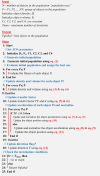

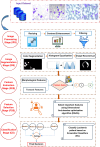

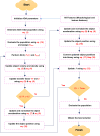
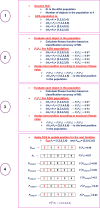
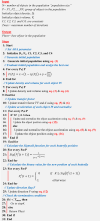
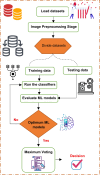



Similar articles
-
Utilizing Deep Feature Fusion for Automatic Leukemia Classification: An Internet of Medical Things-Enabled Deep Learning Framework.Sensors (Basel). 2024 Jul 8;24(13):4420. doi: 10.3390/s24134420. Sensors (Basel). 2024. PMID: 39001200 Free PMC article.
-
GFNB: Gini index-based Fuzzy Naive Bayes and blast cell segmentation for leukemia detection using multi-cell blood smear images.Med Biol Eng Comput. 2020 Nov;58(11):2789-2803. doi: 10.1007/s11517-020-02249-y. Epub 2020 Sep 15. Med Biol Eng Comput. 2020. PMID: 32929660
-
Acute leukemia classification by ensemble particle swarm model selection.Artif Intell Med. 2012 Jul;55(3):163-75. doi: 10.1016/j.artmed.2012.03.005. Epub 2012 Apr 15. Artif Intell Med. 2012. PMID: 22510477
-
Towards Diagnostic Intelligent Systems in Leukemia Detection and Classification: A Systematic Review and Meta-analysis.J Evid Based Med. 2025 Mar;18(1):e70005. doi: 10.1111/jebm.70005. J Evid Based Med. 2025. PMID: 40013326
-
Leukemia segmentation and classification: A comprehensive survey.Comput Biol Med. 2022 Nov;150:106028. doi: 10.1016/j.compbiomed.2022.106028. Epub 2022 Sep 13. Comput Biol Med. 2022. PMID: 36126356 Review.
References
-
- Ramaneswaran, S., Srinivasan, K., Vincent, P. D. & Chang, C. Y. Hybrid inception v3 XGBoost model for acute lymphoblastic leukemia classification. Comput. Math. Methods Med.1, 2577375. 10.1155/2021/2577375 (2021).
-
- Ghaderzadeh, M. et al. Machine learning in detection and classification of leukemia using smear blood images: A systematic review. Sci. Program.2021, 9933481. 10.1155/2021/9933481 (2021).
-
- Khan, M. et al. Automated design for recognition of blood cells diseases from hematopathology using classical features selection and ELM. Microsc. Res. Tech.84, 202–216. 10.1002/jemt.23578 (2020). - PubMed
-
- Imran, T. et al. Malaria blood smear classification using deep learning and best features selection. Comput. Mater. Contin.70, 1875–1891. 10.32604/cmc.2022.018946 (2022).
MeSH terms
LinkOut - more resources
Full Text Sources
Medical
Miscellaneous

